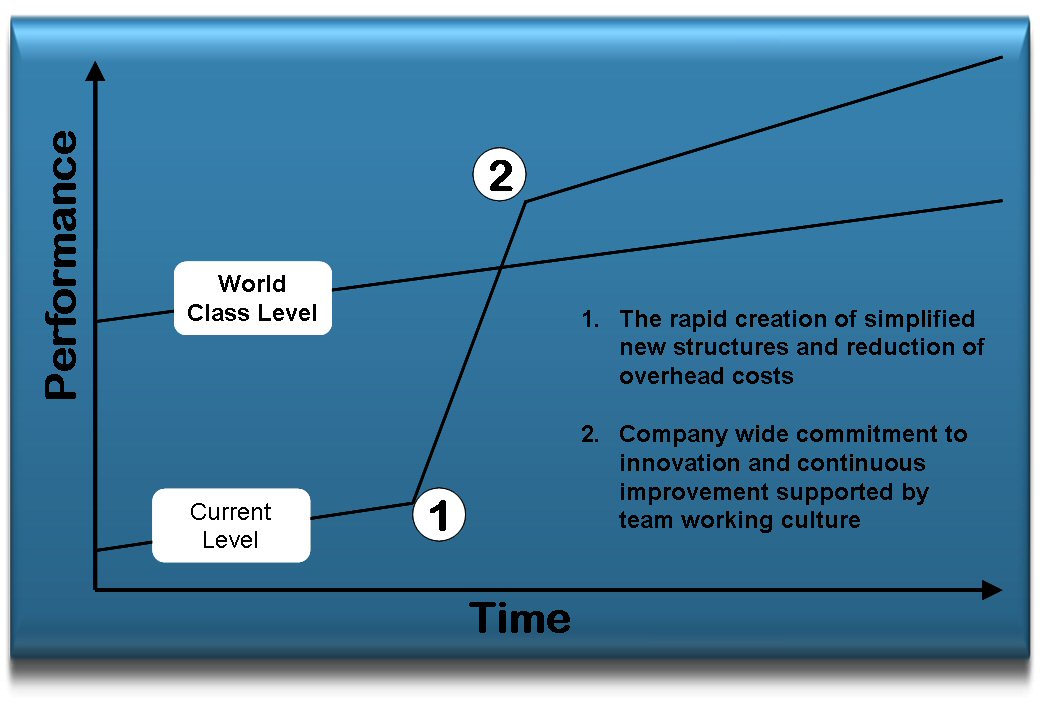1.05 - Manufacturing Strategy
Overview
The manufacturing processes in a business are of fundamental importance and must be subjected to continuous improvement to maintain competitiveness in the face of a changing marketplace. World Class businesses have learned how to make manufacturing capability a formidable competitive weapon. They compete via their manufacturing strategy which fully supports achievement of overall business targets. A manufacturing strategy is a particularly important part of the overall business strategy and must be compatible with, and integrate with, the other strategic elements.
Many manufacturing systems were designed to support a different set of circumstances than those which exist today. In response to competitive pressure organisations changed their systems in an incremental and piecemeal fashion which has led to high levels of complexity. To overcome the problems of high levels of complexity manufacturing systems have to be re-designed using a systems approach which deals holistically with the processes ensuring that all inter-acting elements are taken into account.
Achieving a Radical “Step Change” in Manufacturing

End Product of Developing a Manufacturing Strategy
There has to be a detailed definition of:
- The simplest integrated combination of processes, measures of performance, IT, tooling systems, people, organizational structures, information flows, control systems, and IT required, with a competitive balance or technology and methodology.
- The cellular shop floor architecture with machines, processes, and people arranged around materials flow processes.
- The education and support elements needed to support people development plans.
- Disciplined operational practices to ensure effectiveness of multi-disciplinary teams crossing functional boundaries (e.g. for scheduling, material flow planning and control; for auditing and maintaining organisational disciplines; continuous improvement of operational procedures; for ensuring products are designed to facilitate ease of manufacture)
- The total quality procedural standards framework and supporting quality design and control practices, techniques and procedures.
- The procedures for regular review, overhaul and development to match the changing needs of the customer, the marketing strategy and the product engineering strategy whilst ensuring the lowest manufacturing cost base consistent with high quality of performance and service.
There should be a periodic strategy review, normally every six months, and as a routine this must examine closely trends in product mix, volumes, and variety. It should also look at developments in technology and environmental issues that will affect the manufacturing strategy. At this time an organisation will define its projects and measures of performance.